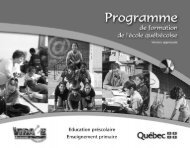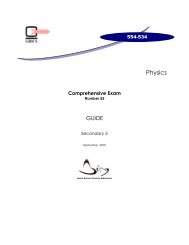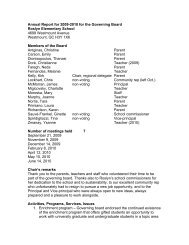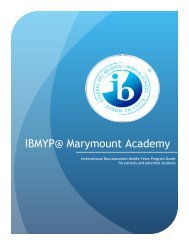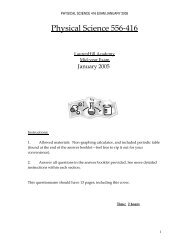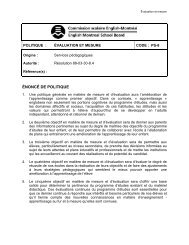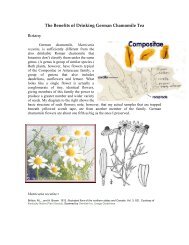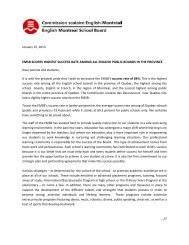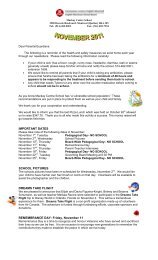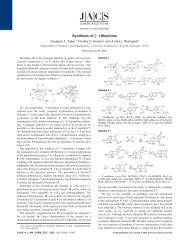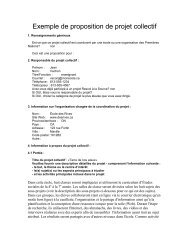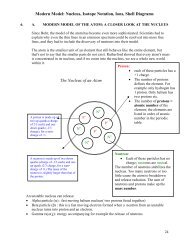Literacy Survival Tips
Literacy Survival Tips
Literacy Survival Tips
You also want an ePaper? Increase the reach of your titles
YUMPU automatically turns print PDFs into web optimized ePapers that Google loves.
5<br />
them discuss what they are<br />
wondering by posing openended<br />
questions.<br />
Senses Alert (Oczkus, 2009)<br />
As your students listen during<br />
read-aloud, ask them to be on the<br />
lookout for sentences, words, and<br />
phrases that require them to use<br />
their senses to really experience<br />
and comprehend the book.<br />
■ Throughout the reading, ask<br />
questions like, Did you see that?<br />
Did you hear that? Can you<br />
taste that or feel that?<br />
■ Ask students to turn and talk<br />
to partners after you read<br />
a portion of text and give<br />
examples of one or more senses<br />
depending upon the text.<br />
■ Ask students to make movies<br />
of the book in their heads. Even<br />
when reading a picture book,<br />
the illustrator leaves some of<br />
the action up to the reader to<br />
formulate in his or her head.<br />
■ After a read-aloud session,<br />
students may quickly sketch<br />
a scene they imagined during<br />
the reading. Students share<br />
sketches with one another.<br />
■ Discuss how visualizing and<br />
using other senses helps good<br />
readers comprehend text.<br />
Partner Talk/Discussion Starters<br />
(Oczkus, 2009)<br />
Before and after reading aloud, to<br />
deepen student comprehension,<br />
allow students to quickly turn and<br />
talk to partners for just a minute or<br />
so about their questions, confusions,<br />
and ideas related to the text. You<br />
might try using discussion starters<br />
such as these to guide and direct the<br />
interactions (select one at a time for<br />
younger students or put this list on a<br />
chart and allow the students to select<br />
their own discussion starters):<br />
■ Something new I learned was....<br />
■ I liked the part where...because....<br />
■ I realize now that...because....<br />
■ This reminded me of...because....<br />
■ I was surprised by...because....<br />
<strong>Literacy</strong> Mystery Boxes<br />
(Pearman, Camp, & Hurst, 2004)<br />
This is a very clever idea that some<br />
educators developed and then shared<br />
in an article in The Reading Teacher<br />
journal. The authors suggest bringing<br />
in a box that holds several items that<br />
relate in some way to the story. So,<br />
for example, to help students predict<br />
what Charlotte’s Web by E.B. White<br />
is about, the teacher pulls out of the<br />
box a plastic spider, a plastic rat or<br />
pig, a spider web, or a blue ribbon.<br />
For The Very Hungry Caterpillar by Eric<br />
Carle, the authors suggest bringing in<br />
a stuffed caterpillar, green leaf, apple,<br />
and lollipop. The possibilities for<br />
mystery boxes are endless, even<br />
for students in middle school<br />
and high school. Mystery boxes<br />
make reading aloud memorable<br />
for students and provide discussion<br />
prompts and opportunities for rich<br />
vocabulary instruction. Have students<br />
bring in mystery boxes to go with the<br />
books they are reading, as well.<br />
Interactive Engagement<br />
(Oczkus, 2009)<br />
You can easily make your readalouds<br />
a bit more interactive by<br />
inviting students to turn and talk to<br />
partners before and after the reading.<br />
Discussion alone has been shown to<br />
deepen comprehension (Lapp, Flood,<br />
Ranck-Buhr, Van Dyke, & Spacek,<br />
1997). Sometimes that is all it takes<br />
to grab your students and focus their<br />
attention. You may also choose from<br />
these interactive engagement ideas<br />
after a read-aloud:<br />
■ Drama—Ask students to make<br />
faces to demonstrate the emotions<br />
of the characters in various parts<br />
of the reading. Or ask volunteers to<br />
come forward and act out portions<br />
of the text. Students may also turn<br />
to a partner and “interview” each<br />
other, taking turns role-playing as<br />
characters.<br />
■ Art—Students can quickly sketch a<br />
favorite part or character, or what<br />
they’ve learned, and share with a<br />
partner.



